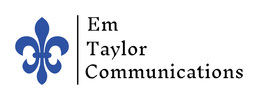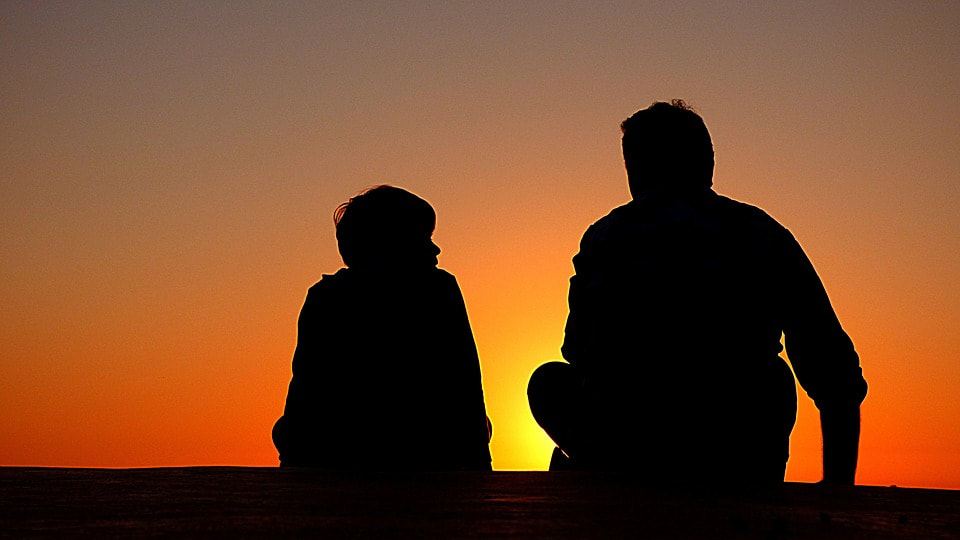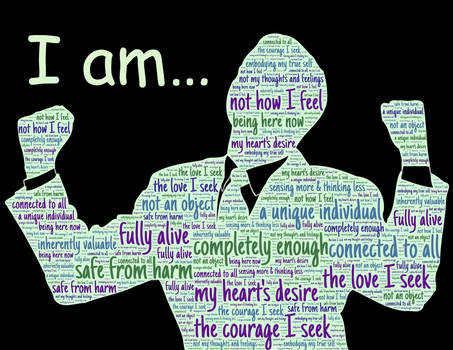To illustrate this issue, I will share two separate experiences: (1) a particularly awkward couple dispute among some neighbors at a bus stop and (2) a personal conflict I had with a stranger during a routine shopping trip to Target.
To begin, I will relate a short experience I had with some neighbors.
A couple of years ago while waiting in the morning with a large group of neighborhood kids and parents at the elementary school bus stop, a couple began fighting with each other.
As the couple verbally spared with each other loud enough for others to see and clearly hear, I felt squeamish and kind of embarrassed for them and all of us. While I understood their general feelings of frustration with each other, I winced knowing that the audience of other parents and lots of school children were uncomfortable witnessing a private dispute out in the open. At the time, I also believed that their public fighting would damage rather than improve their chances at resolving their personal issues with each other.
Have you ever opened a truly private conflict in a public place? Do you remember the feelings that were involved once you realized that you had an audience to your private dispute?
I certainly have made this mistake at different times of my life and largely regret trying to resolve private conflicts in public spaces. When looking back on these experiences, I realize that there were several reasons I knowingly or unknowingly participated in fighting or trying to resolve a conflict in public.
Why do we try to resolve private conflicts in public?
- We think we can resolve something quickly and easily
- We believe the other party will cooperate with our quick and easy plan for resolving the conflict
- We are trying to be authentic and honest in the moment
- We are overwhelmed by anger
- We are taken by surprise with an unexpected turn of events
- We are seeking support for our position from an outside audience
During my Target experience with a volatile stranger, I was both surprised by a turn of events and witnessed how another party tried to leverage a public audience to gain support for her position.
One day, while shopping at Target with my three young children, I decided to purchase slurpies for the kids because I did not want them to cry and cause a scene while shopping in the store. While not nutritionally sound, I had also purchased a Cherry slurpy for my youngest toddler-aged daughter, which she happily sipped while I shopped. My plan had worked brilliantly for keeping her busy until we arrived at the checkout stand. Before I could stop her, my little girl had removed the top of the slurpy and dropped the lid on the ground behind us. I didn’t think much of it until I realized that the lid had flicked up a few small splashes of red slurpy that landed on the white pants of a fifty-something year old woman behind us in line.
I immediately apologized profusely to the woman who did not initially seem angry. However, she soon began criticizing my parenting and telling me that I needed to keep better control of my kids. I tried to apologize and then pay for my purchases but when I looked up again the white-pants lady had come all the way around the cashier to confront me and bar my exit from the store.
She stood with her hands on her hips and demanded that I pay her $30 to replace her new white pants. When I suggested that she get them dry cleaned or use a stain remover, she only grew firmer and more belligerent. Nearly 10 people, including the Target store clerk, stood silently around me as I faced this furious woman. No one dared stand up to her but she used that silence to her advantage to maintain her position of power as I cowered by the checkout with my three young children.
Not knowing what else to do, I rifled through my purse and handed her $30 in cash. With MY money in her hand, she finally removed herself from my presence to allow me and my three children to leave the store. Once I had quietly exited the store and sat down in my car, I was shaking and felt like I had just been robbed.
Certainly, there were drops of red slurpy on her pants, but did this small conflict demand such as public scene? In retrospect, I wished that the clerk had called the store manager (or that I had asked her to call the manager) so that the white-pants lady and I could have worked out an equitable solution to our private conflict without what felt like a Western shoot-out scene.
When looking back on both of these experiences, I realized that neither my neighbors nor I had a plan for how we would handle our private conflicts publicly. In disasters, I have heard that the people who are able to survive, act, and help others, have envisioned in their minds beforehand what they will do when disaster strikes rather than never spending any time thinking about it.
In terms of conflict resolution, what if we each assumed that we might have conflicts with each other and developed individual, family, or even work plans for how to handle conflicts when they occur? In short, rather than assuming that we will never get mad or disagree, what if we assumed the possibility and moved into constructive action in public when conflict occurred rather than being immobilized with fear, anger, or a desire to gather others to support our side?
Even with the stranger at Target, I can now anticipate (but not panic) about the possibilities for conflict resolution and draw from a variety of tools for handling private matters in public places. Before we look at those options, let’s first consider which conflicts should be resolved in public spaces.
What conflicts should be resolved in the public sphere?
Certain conflicts necessarily reflect public issues that involve many different parties, opinions, and societal processes. When conflict involves many people, the public or society needs to weigh in to make sure there is due process of law through legitimate processes. Issues of law, environment, health, safety, and other human rights demand public attention and participation.
While this post focuses on the problem of trying to resolve private disputes in public spaces, there are many public conflicts that should remain necessarily in the public sphere for a variety of reasons.
What are the benefits of public conflict resolution?
- Many people get to weigh in their voices on the conflict.
- Public discussion and even protests usually reinforce key societal institutions and civic values that have been created to manage both large and small conflicts.
- When we include all key stakeholders in a conflict, which may include the public or public representatives, we make sure that real workable decisions can be made in good faith.
Despite the need for public conflict resolution for major public issues, we are very familiar with high profile private conflicts that are broadcast throughout social media and especially the tabloids at the check-out stand. While we may be attracted to read about celebrities’ brushes with the law or their painful divorces, I often feel the same squeamishness reading about a famous person’s private conflicts like I do with witnessing a private marital dispute at the bus stop.
So, despite the necessity and appropriateness of resolving many public concerns in public spheres, there are good reasons for keeping certain conflict resolution processes private.
Why keep certain conflict resolution processes private?
Just in terms of large numbers of peoples and opinions, involving too many people in conflict resolution may limit our ability to reach a decision. Even in a large family like mine, when we ask the kids where they’d like to go for dinner it turns into a big dispute when we’re just trying to buy dinner. Sometimes, my husband and I just make executive decisions in private about small matters that don’t necessitate a democratic process (or brawl).
While inquiring minds want to know, see, and understand every process in the public sphere, certain conflicts, even large political conflicts, usually relate back to interpersonal relationships among public representatives that need time, space, and confidentiality to be worked through.
You may recall that even with the Camp David talks that led to the Camp David Accords between American and Middle Eastern leaders in the 1970’s. During private time at Camp David in Maryland, world leaders met in an intimate setting without public constraints. In this private setting, high profile leaders could reach understandings that were informed by the public but remained based in interpersonal relationships where much of the real conflict resolution action takes place.
Finally, there are many situations which demand privacy/confidentiality that allows for greatly expedited and enhanced conflict resolution. Consider the settings for marriage counseling, working with a personal coach, meeting with HR in a corporate setting, hiring a mediator before filing a court case, or even visiting with one child during a separate outing to discuss what’s working or not working in sibling relationships. Each of these settings demand a real sense of confidentiality and trust that is grounded in fewer rather than larger audiences.
What should we do when we feel the need to resolve conflict in public situations?
We all recognize the gut feelings of discomfort when we try to resolve private matters in public, and we know that we may not always get it right. In fact, we’re going to occasionally be surprised with confrontation by the white-pants lady at Target or the splash of slurpy on our own pants. We will encounter private conflict situations in public situations with those we know and with strangers that signal a need for an effective response.
By differentiating our public and private conflict resolution needs, we can begin making changes that will lead to more harmony both in our private and public lives.
In particular, there are a few things we can do to be better prepared for dealing with private conflicts that may erupt in public situations.
- While it sounds very strange, we benefit by creating individual, couples, and even family plans for what to do when we do have conflicts with each other out in public rather than assuming that we’ll always have smooth sailing.
- If we initially avoid the conflict in public, we need to make sure that we appropriately address the conflict in private with the involved parties. In short, our public avoidance should not be a brushing off of the conflict altogether. This will ultimately lead to relationship break-down.
- We need to make sure that we are not just including others in our conflict to gain support for our position. We will only amplify and exacerbate the conflict if we try to gain support by including non-stakeholder audiences.
These are just a few of my thoughts as we approach the hustle and bustle of the holidays with overlapping private and public interactions. Make sure that you are actively choosing how to respond to the conflicts in your life rather than just reacting to whatever happens to you in a given situation. You may even want to ask for time to think in a public situation, so you don’t behave in a way that you will regret.




 RSS Feed
RSS Feed